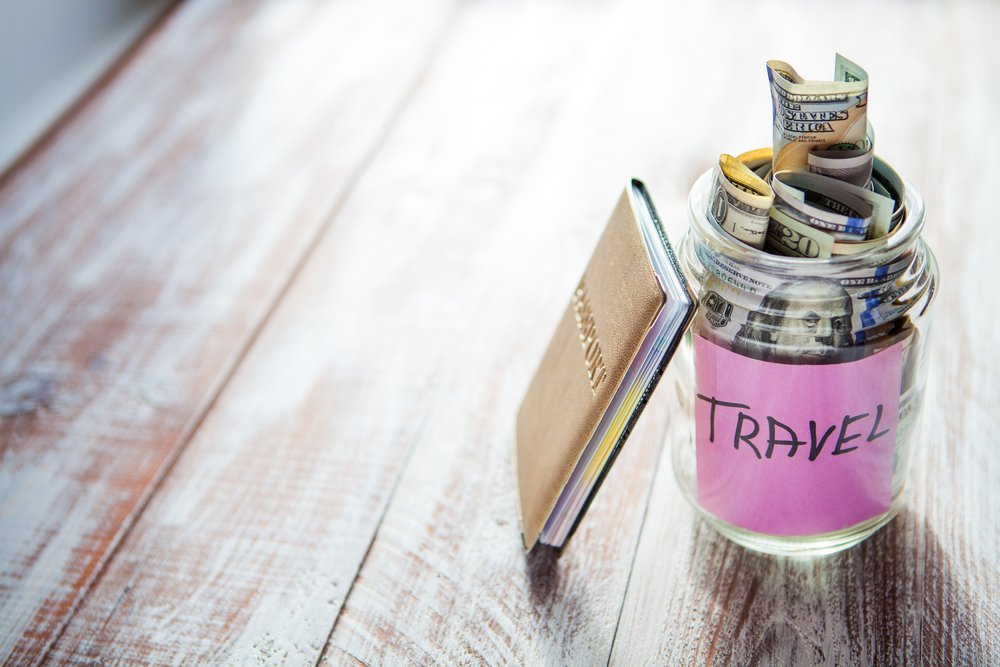Friends and family are always keen to recommend places after coming back from holidays. Meanwhile, all you’re thinking about is the price tag. Traveling has a reputation for being a rich people sport, but if you find the right travel budget guide (like this one), you’ll be packing in no time.

Step 1. Be realistic with yourself
If you think you can’t afford three weeks in the Four Seasons Hotel in downtown New York, you’re probably right. Respect your limits and trust your instincts. At the same time, commit to your decision and be willing to save and spend. You may not have enough saved for your dream trip but planning proactively can take you there.
- Sell old items. Go through your closet and storage. If you have not used them in over a year, sell them.
- Stop getting mani-pedis and eating out. Groom at home and pack a lunch.
- Park your car away for a while. Maybe ask a friend with a vacant garage to help you out. Use public transportation and save on the insurance money.
- Get a savings account. Start a separate one for travel.
Step 2: Find a purpose
Are you traveling to…
- Relieve yourself from your workaholic schedule?
- Need to have quality family time?
- Have fun with friends?
- Need some alone time?
When you know why you’re going, you’ll know where to go. Maybe you want to get away from city life, so you need a place with more nature. If you’re with friends, you maybe want some nightlife in your destination. Just want to relax? Maybe a resort is best.
Step 3: Figure out a timeline
Count your sick leaves and collect your vacation days. Let your boss know months in advance you’re going to be away. This way, you’ve made the commitment to leave, and you’re more likely to keep it.
Planning a timeline also means you are taking into account the time you have to build your budget. If you’re planning a trip to Europe, you may need a bigger budget, and therefore, need to work hard for three or four months instead of two. Therefore, plan plan plan ahead.
Step 4: Pick your destination

There is no harm in staying domestic or crossing the border to the South. Every city has its beauty. Remember, your destination determines your budget.
Step 5: List and calculate your main expense
These are things that you have to pay for no matter what, which means you can estimate an amount and work for it.
Visa/Passport renewal: If you want to avoid this cost, pick a place your passport does not require a visa for. Or better yet, travel to another province or city in your home country.
Travel Insurance: Don’t be skimpy with this one. Health and safety are a priority.
Transportation primary: If you can get there cheaper by land, why not take that option. If you need to fly, start looking in advance in offseason.

Transportation secondary: Instead of using driver services such as Uber, research the local transportation system of the city. Try to rent a bike or plan to stay downtown so you can just walk to your destinations.
Accommodation(s): My personal favorite is hostels and Airbnb. Not only is it cheaper, but you’ll also meet new people! Have a family member or a friend who lives elsewhere? Send them a message and ask if they could host you. Let them know you’re willing to pay a small fee for your stay.
Food: Pack ramen and a lot of snacks!! I cannot stress this enough, eating out every day will take a toll on you and your tummy. Not only will you save money, but you’ll save time if you’re in a time crunch.
Events and entrances: Is there a heritage site with an entry fee or a ski lodge you need to rent equipment from? Plan for it. You can find discounts online or on Groupon.
Souvenirs: As much as you say you don’t want to shop, you will. So, set aside some money to add magnets to your collection or gifts for close friends. Also, stay away from malls and don’t be afraid to haggle in local shops.
Emergencies: Life is unexpected and you never know when you’ll take a U-turn. I lost my luggage but I had enough to buy 2 shirts and a pair of jeans to survive on until I reached a bank. As a result, always keep a little extra for emergency situations.
*While on your trip, write down every single expense
*Convert your currency into U.S.D months before. The dollar keeps rising and it’s always good to have US currency to get more out of your hard earned buck.
Step 6: Pick all the places you want to see/go
Do a search on all the places you want to see. You’ll get the idea of its cost and not be completely surprised when you get there. Maybe the restaurant your great aunt recommended is out of business now – you’ll save yourself the trip.
Use Google location plotter to estimate the distances between each so you know when to walk and when to take the taxi/bus. Having a visual map on your phone will also help you familiarize with the streets and restaurants in the area.
Step 7: Pick all the things you want to do

Make a bucket list. This could be anything from bungee jumping or going running on the beach. These are things you’ll actually remember and give you fulfillment.
Step 8: Set it in stone
Give yourself reminders – wear a bracelet everyday or change your home screen to your destination to fight the temptation to spend money.
Step 9: Stay strong
You may face setbacks in your savings and that’s okay – just don’t give up on your escape and keep going.

